How 5 apps encourage user loyalty
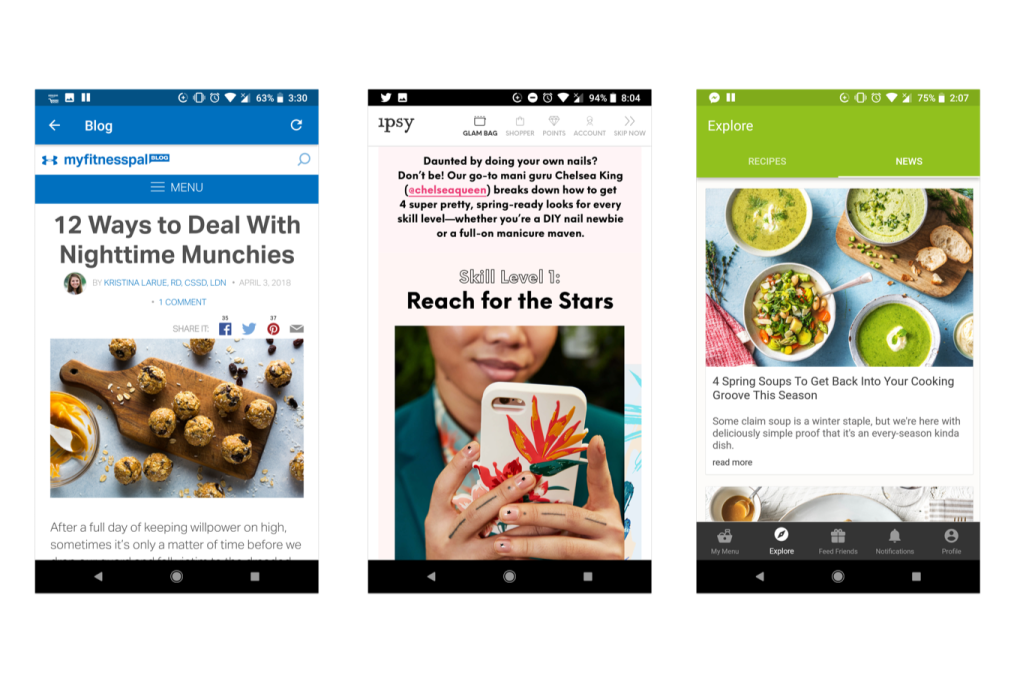

HelloFresh copywriter Jacqueline Parisi recently spoke with us about the decision to bring content from the meal kit company’s blog into their app:
“We wanted to increase the amount of time that our customers spend in the app and have them dwell there. We knew we had to draw them in beyond just looking at the recipes and selecting their meals each week.”
While apps can boost referred traffic and audience loyalty for brands, app retention is a tough nut to crack. According to Localytics, 71% of users abandon an app within 90 days. For people to become long-term users of your app, they need to understand how your app makes their lives better.
Infusing the in-app experience with helpful or inspirational content is one way to make your app’s value clear. HelloFresh, MyFitnessPal, Ipsy, Street Easy, and Clue all offer examples of app content strategies that motivate and educate users—and keep them coming back for more.
HelloFresh: Highlighting habits that encourage home cooking
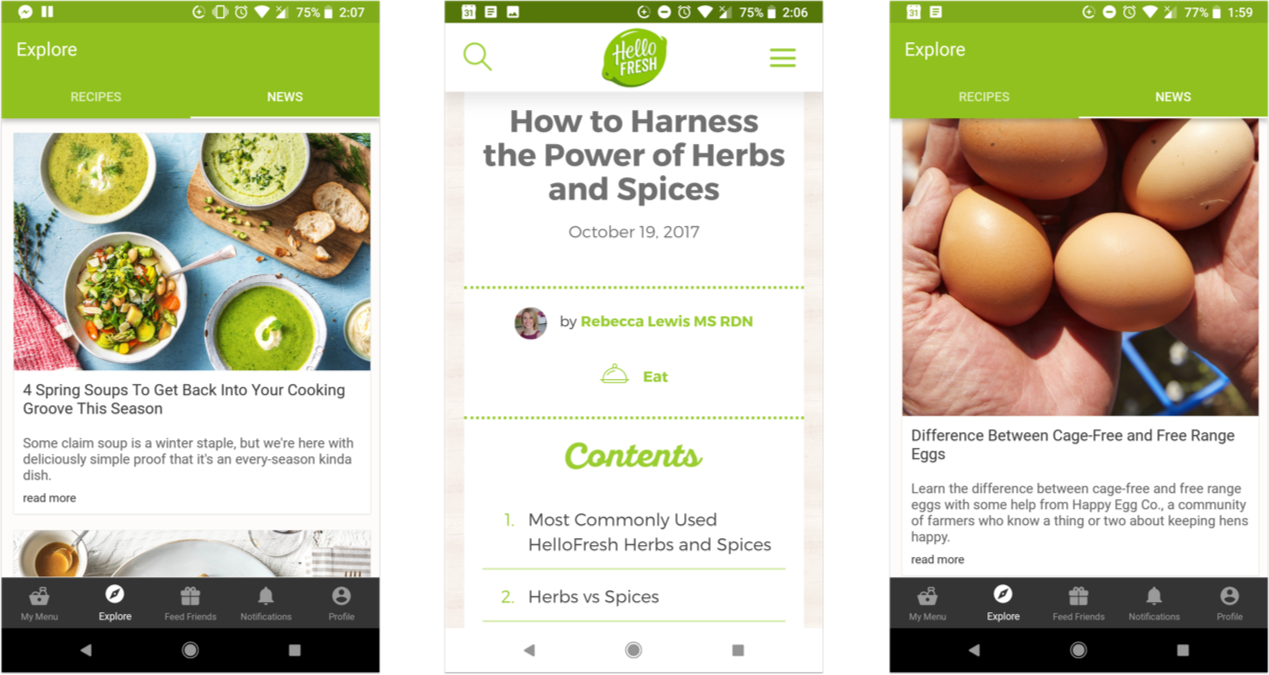
HelloFresh’s mission is to make home cooking simple and easy. “At the end of the day we want to break the inertia of cooking,” Parisi said.
Their blog aims to reduce that friction with recipe roundups that get folks back in “the cooking groove” or help them level-up their prep skills. By putting that content directly in the app, HelloFresh is giving customers opportunities to get excited about new meals to try and throwing lifelines to keep them from giving up on cooking and just ordering takeout instead.
After Parisi’s team publishes a post on their blog The Fresh Times, they immediately push it to News feed in the Explore section of the app. Clicking on a post’s title will send users to the blog on HelloFresh’s mobile site. By tracking links tagged with UTM parameters, Parisi’s team learned that traffic from the app to the blog has increased over time.
“That’s a sign that our customers are engaged with us on multiple platforms, and they’re interested in this added value content that extends beyond the subscription box experience,” Parisi said.
MyFitnessPal: Motivating people to stay on track
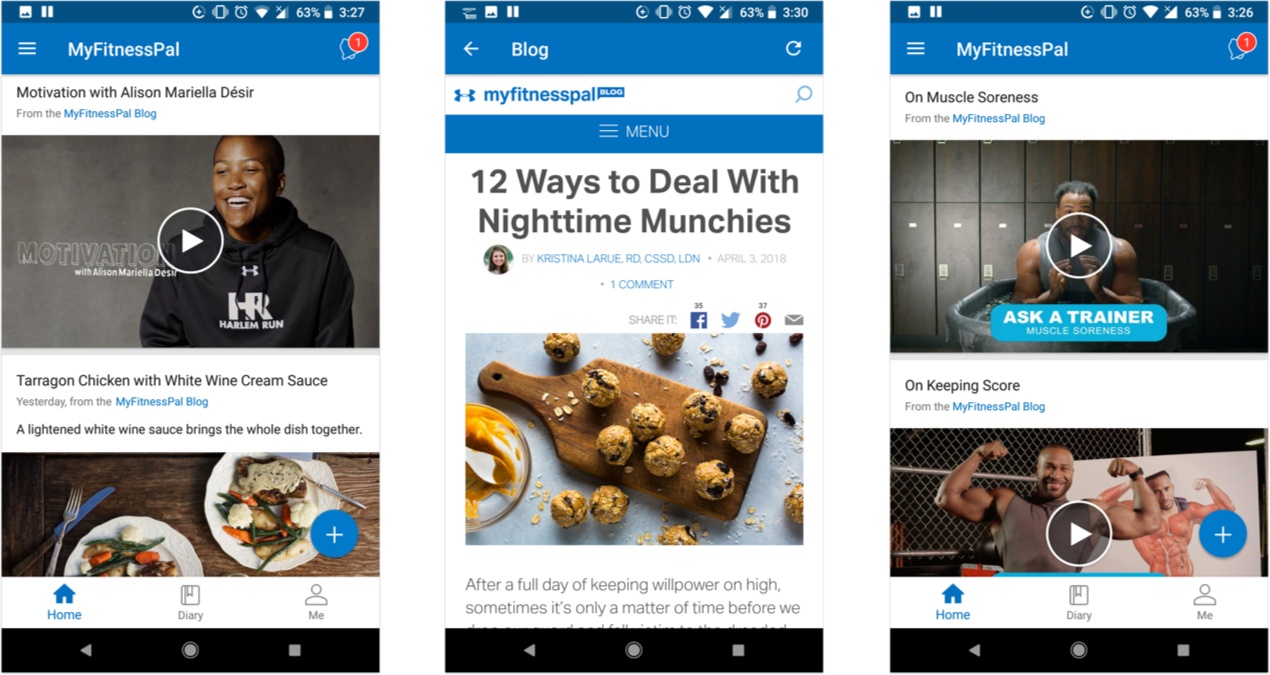
Blog posts and videos are front and center in the MyFitnessPal calorie counter app, right on the homepage.
The $66 billion weight loss industry exists to cure what eludes many Americans: eating well and exercising regularly. Seeing healthy recipes, new workouts, tips for curbing cravings, and motivational videos from athletes could make the difference between someone staying on track or staying on the couch.
Users who stay motivated will keep using MyFitnessPal to track their eating and exercise habits. Those same users are more likely to see themselves as athletes—expanding parent company Under Armour’s target market.
ipsy: In-app beauty-inspo
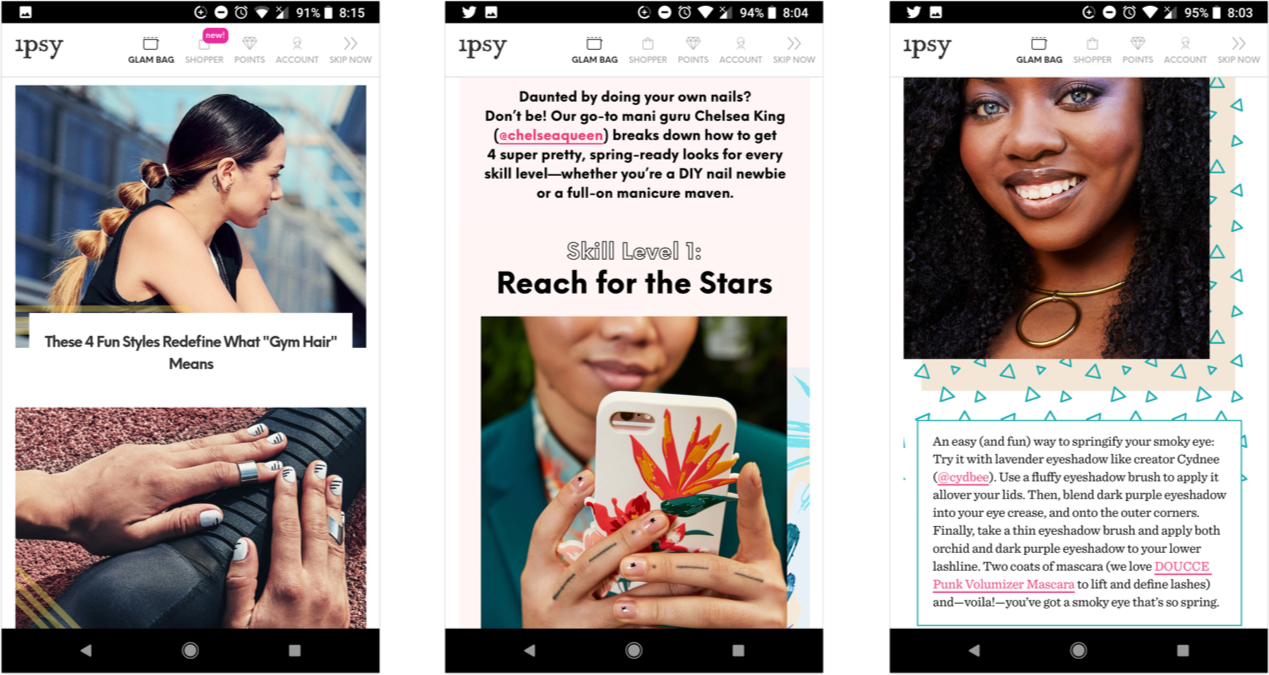
ipsy—a beauty subscription service that sends customers five new products a month—was founded because of the beauty vlogger community on YouTube. True to their origins, their app puts content first.
Just like the HelloFresh app, the Ipsy app extends the subscription box experience. Subscribers can see what their next shipment will contain and manage their account. Scrolling down the homepage reveals the Beauty News section, which is filled with tutorials to help subscribers conquer application of their products and connects them with fellow “ipsters.” Each video and post ties into the theme for the month’s Glam Bag.
Tutorials are often broken out by skill level, so newbies feel encouraged and makeup experts can take on new challenges. ipsy’s in-app content gives their subscribers plenty of reasons to stay engaged, regardless of the contents of their Glam Bag.
StreetEasy: Giving renters and buyers guides to make informed decisions
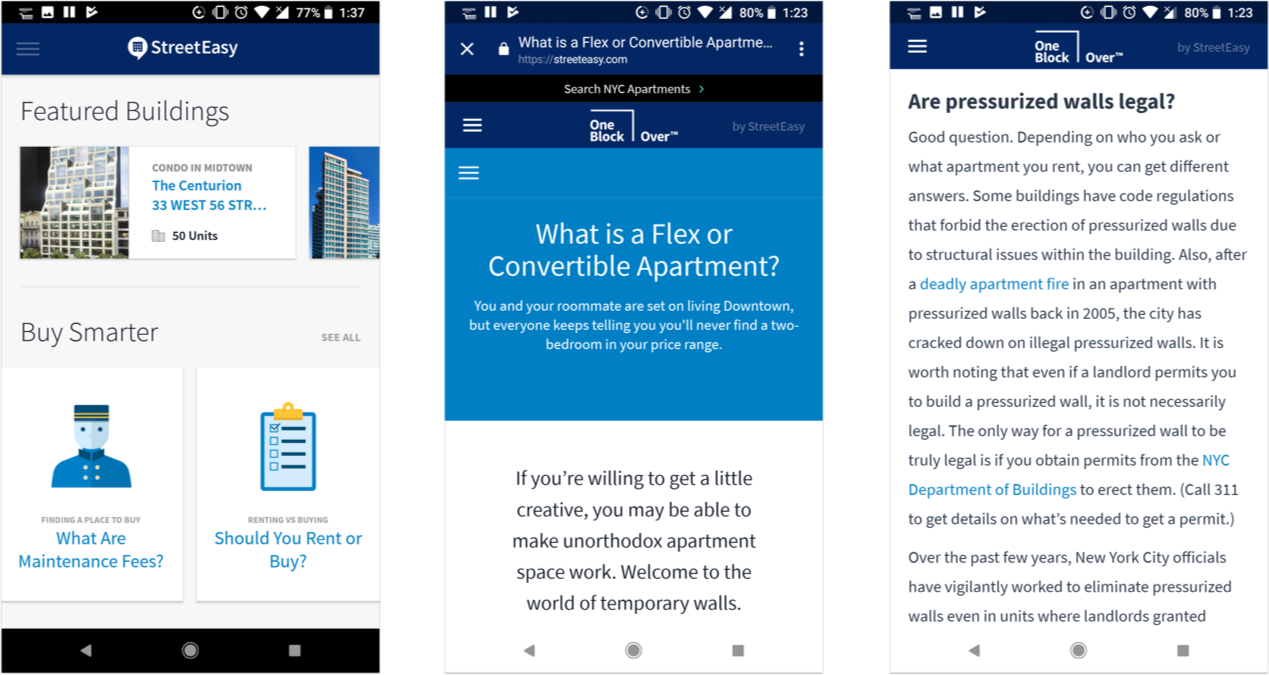
No matter where you are, finding a place to live is a stressful process. Multiply that stress exponentially if you’re trying to rent or buy a home in New York City.
Real-estate listings platform StreetEasy understands just how anxiety-ridden this process can be and compensates by feeding users content from buying and renting guides as they’re browsing apartments in the StreetEasy app.
StreetEasy anticipates questions their users might have—What is a flex apartment? What is a legal bedroom in NYC?—and provides links to the answers on their blog One Block Over. This helps their users make informed decisions and removes hesitations about tapping on a listing and contacting an agent.
Clue: Earning trust for the intimate moments in life

Health data captures both the most private and most important elements of people’s lives. Clue is an app that allows women to track their menstrual cycle to learn more about how their body works.
To encourage people to input daily data about this deeply personal experience, Clue takes every opportunity to gain their users’ trust.
When a user logs in to Clue for the first time, they’re asked to answer questions about their health—like how often they get their period or how long PMS lasts. Users are later encouraged to enter data on how they feel each day, including their energy level, emotions, and quality of sleep. In moments like these, Clue cites menstrual and reproductive health research from their scientific partnership with Stanford, Columbia, and Oxford to explain why tracking those aspects is important for overall health.
With research-backed content integrated into every corner of their app, Clue establishes itself as a trustworthy source of information their users can rely on.
Measuring the success of in-app content
If you’ve invested the time to integrate content with your app, you should have a way to see if that content is actually holding your users’ attention. The following metrics can help you gauge if your in-app content strategy is working:
- Content that has a high number of returning visitors is more likely to foster loyalty.
- Engaged time is useful for measuring the sincerity of returning and first time visitors—if someone consumes a piece of content for a minute and a half or two minutes, that’s a strong signal that something you did was worthy of their attention.
- If, like HelloFresh and StreetEasy, your content is hosted outside the app on a mobile site, we recommend adding UTM parameters to your content’s URLs to track referral traffic from the app to your mobile site. Parisi’s team at HelloFresh uses UTM parameters and the Parse.ly Analytics dashboard to track traffic from the app to the blog.
Creating a stellar in-app experience is only one part of building a brand that gets people’s attention. See how HelloFresh’s data-informed content strategy helps them stand out in crowded market in this case study.